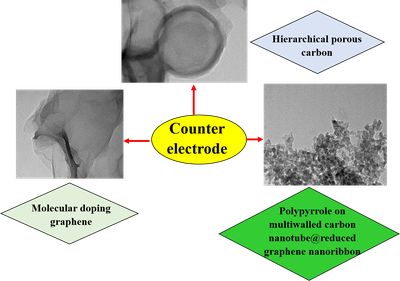Kasetsart University, Department of Chemistry, Bangkok, Thailand
Development of electrocatalysts as the counter electrodes (CEs) for dye-sensitized solar cells (DSSCs)
As one of the most promising photovoltaic devices to convert solar energy to electricity directly, dye-sensitized solar cells (DSCs) have attracted considerable attention over the past several decades due to their low cost, simple assembly, good stability, green feature, and relatively high conversion efficiency. Considering the target of expanding solar generation up to the tetrawatt scale, however, our lab’s activities have been made to replace the expensive and instability Pt CE by alternatives with low cost, high stability under corrosive electrolyte, and high electrocatalytic activity in order to achieve the large-scale deployment of DSSCs.
We are especially interested in novel porous carbon materials with well-defined hierarchical pore structure and large surface area to minimize the internal resistance and maximize the accessibility of the electrolyte ions into the pores of the electrode.
In recent work, our lab also has used the molecule-containing the electron-donating or electron-withdrawing substituent doped graphene as an efficient Pt-free CE to improve the tri-iodide reduction activity, attributed to the induced changes of both atomic charge and spin density of graphene.
Last but not least, our research group employs pyrrole (Py) polymerized on multiwalled carbon nanotube@reduced graphene nanoribbon (MWCNT@rGNR) as a CE for DSSC to possess excellent electrocatalytic ability for the reduction of I3– ions, attributed to the fact that PPy has high conductivity and superior electrocatalytic activity as well as MWCNT@rGNR has high electron transfer, surface roughness and surface area to promote the reduction and regeneration of I3– ions.




